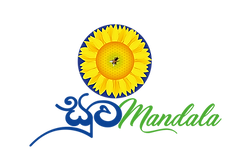Family 1 (2014/15)
This family is the very first family we supported in response to a request made by the local government authority in 2014. This is a family of 2 girls and a boy who were living with their father since their mother had abandoned them 2 years back.

This family, living in the Habaraduwa DSD in the Galle District, is the very first family we supported in response to a request made by the local government authority in 2014. It is a very special initiative, not only because it gave birth to the “Building Homes, Building Bonds” programme, but also because it remains one of the most successful interventions of the programme to-date illustrating the long-term transformation and empowerment of a family that is possible through timely interventions.
This is a family of 2 girls aged 13 and 5, and a boy aged 10 who were living with their father since their mother had abandoned them 2 years back. They were living in a shack with very limited protection, no toilet and the bare minimum of basic requirements, while the father too did not have a proper source of income. As a result, the education of the children was also disrupted while the eldest girl child barely escaped an attempt of sexual assault by a stranger while at home, when the father had to leave them for a few hours one night for some labour work. The local government was considering placing the children in residential care given the risks to their wellbeing, and what was perceived as the father’s inability to take proper care of the children. However, having grown up in a care home himself and suffered the consequences, the father adamantly refused to place his children in care and vowed to give them the best care possible if only given a chance.
Subsequently, a new house was built for the family with the assistance of over 40 individual donors which was handed over to the family in May 2015. Going beyond material support, measures were taken to provide educational support to the children through catch up education and livelihood support for the father.
Progress was shown almost immediately in the children’s education, psychosocial wellbeing, family relations and their economy. As of 2022, the family has achieved an impressive level of stability and wellbeing in comparison to their condition in 2014. The youngest child is currently studying at a good school and is demonstrating talents in painting. The eldest daughter, who unfortunately struggled with a lot of trauma in her formative years, was unable to continue her studies. However, she received some vocational experience and got married at the young age of 21. The son is working as a delivery boy and is also married. The father remarried after a few years and now have another child from the second marriage. But contrary to fairy tales, the step-mother is a very quiet and kind person who gets along very well with her step-children and provides them with the care and guidance they need to the best of her ability. When I visited the family in December 2019, I was happy to see the material progress they have made indicated by the improvements in household comforts. However, it was the deep gratitude that resounded in the words of the father and the happiness that emanated from his eyes, and the gleeful laughter of the newest addition to the family that bespoke of the real transformation. Love and happiness, when present, can always be felt! Hopefully, you will also get a sense of this major shift between 2014 and 2022 through the photographs we have shared.




Click on any image for the slideshow
